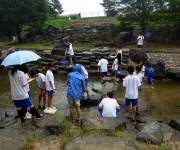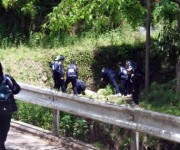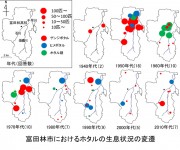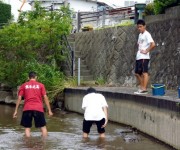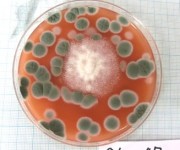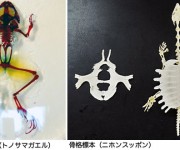- Notice
- Notice of Kansai Conference
Osaka Convention Abstracts: Poster Presentations
2013.12.03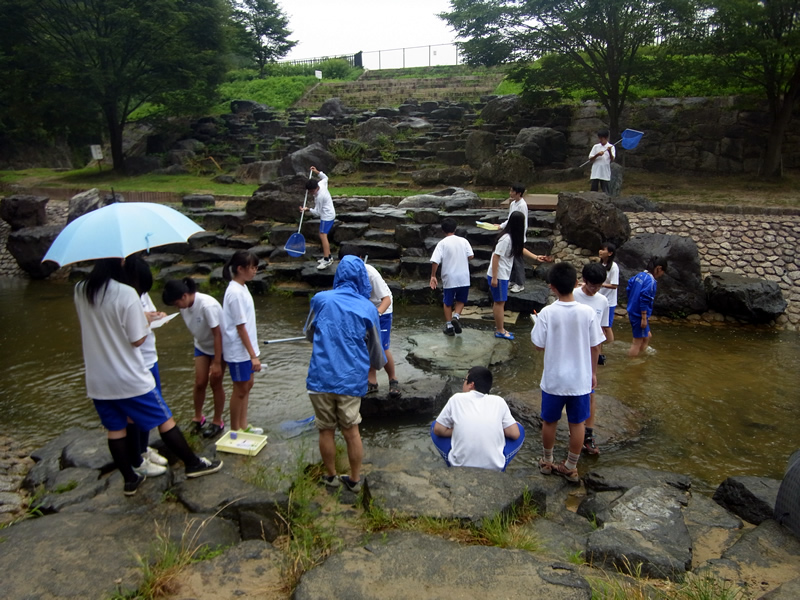
Abstracts of the presentation themes for the 2013 Osaka Conference are now available.
- Tokyo Conference Oral Presentations
- Tokyo Conference Poster Presentation
- Osaka Conference Oral Presentation
- Osaka Conference Poster Presentation
Science Castle is looking for middle and high school students and teachers who wish to attend the presentations. Not only can you attend the presentations listed below, but you can also communicate directly with the junior high and high school students and teachers involved in the research. Please apply for participation below.
https://s-castle.com/castle2013/join
List of Abstracts of Poster Presentation Themes for Osaka Convention
Themes for poster presentations only are listed. Schools making oral presentations will also make poster presentations.Abstracts of Oral PresentationsPlease check the "Exhibitors' Guide" for more information. Please note that there is no Q&A time for oral presentations, so please use the time for poster presentations as Q&A time.
How to deal with nuclear energy in the future considering the nuclear accident (Kyoto Koka Senior High School, Primula Course, Class 2, Year 5)
Purpose of Activity
The purpose of this project is to present the results obtained from "Let's make a fog box and look at radiation", a project of the Science Partnership Program (hereinafter referred to as SPP), outside the university.
Summary of Activities
As part of SPP's efforts, the students learned about radiation under the guidance of NPO AYINSHUTAI and Kyoto University professors. Currently, the students are interested in and learning about the problems at the Fukushima Daiichi Nuclear Power Plant. At the end of July this year, at the "SSH Environment and Energy Conference" held by high school students at Fukui Prefectural University, they made a proposal on how to deal with nuclear power plants in the future. In this presentation, we will compare and summarize the causes of the accidents at Chernobyl, Three Mile Island, and Fukushima Daiichi Nuclear Power Plants, which caused many victims, and the effects of radioactive materials on the human body caused by the accidents.
Isolation and Identification of Cellulolytic Bacteria - 2nd Report - (Osaka Prefectural Horticultural High School, Biotechnology Research Department, 2nd year)
Purpose of Activity
We began research last year to isolate and identify cellulolytic bacteria that exist in nature. In this fiscal year, we conducted isolation methods and fermentation tests of cellulose-degrading bacteria.
Summary of Activities
In this study, we first developed media for bacteria and fungi to screen cellulose-degrading bacteria. To determine the practical feasibility, we used fungi cultured with a screening kit manufactured by Liverace last year. Several media are still being tested.
In addition, an appropriate method was examined as a fermentation test for cellulose-degrading bacteria. Currently, cellulose-degrading bacteria are coated on a culture medium made by suspending crystalline cellulose in a test tube and hardening it with agar. We would like to measure the fermentation power of the cellulolytic bacteria by their growth state.
Purpose of Activity
Interested in wireless power transmission technology, which will be the focus of much attention in the future, he investigated this technology and challenged himself to build a prototype Tesla coil.
Summary of Activities
Wireless power transmission technology is a technology that supplies power to loads wirelessly, and is used to charge smartphones and electric toothbrushes. First, we investigated three theories of wireless power transmission technology: the electromagnetic induction method, which uses electromagnetic induction; the radio wave method, which uses electromagnetic waves; and the electromagnetic resonance method, which uses the interaction of electric and magnetic fields.
Next, a prototype "Tesla coil," a device that generates a strong electric field and high voltage, was fabricated and demonstrated. The one fabricated this time could generate a discharge at a distance of about 20 cm, and could light a fluorescent lamp within a radius of about 50 cm. It is also possible to control the discharge with an arbitrary signal, and it can also be used for performances. Currently, research is being conducted with the aim of increasing the size and efficiency of the device.
Research on digestive enzyme amylase (Science Club, Hyogo Prefectural Sanda Shounkan High School)
Purpose of Activity
His research is aimed at finding foods that contain high levels of amylase, a digestive enzyme that digests carbohydrates.
Summary of Activities
The enzymatic activity of amylase was examined using human saliva containing amylase and crushed vegetable and fruit solutions. The enzyme activity reaction was stopped by adding potassium iodide iodide hydrochloric acid solution after the starch solution and the crushed food solution had reacted for 10 minutes. The lighter the blue color presented at this time, the more amylase was considered to be present. The intensity of the blue color was analyzed using a visible spectrophotometer. Since the concentration of protein contained in each food varied, the Lowry method was used to measure the concentration of protein and compare the amount of amylase in each food.
Is the C4 circuit of maize a two-way street? (Hiroshima Prefectural Hiroshima Kokutaiji High School, Science and Mathematics Seminar, Biology Group)
Purpose of Activity
The C4 plant maize has an NADP-ME type and a PEP-CK type. To elucidate why they have two circuits and how they use them differently.
Summary of Activities
Maize has been described to decarboxylate using NADP-malate enzyme (hereinafter referred to as "NADP-ME"), but recent studies have shown that it also uses PEP-carboxykinase (hereinafter referred to as "PEP-CK") in addition to this enzyme. This means that maize uses two C4 photosynthetic circuits in combination. Therefore, we aimed to elucidate why they have two types of circuits and when they use these two types of circuits differently. Last year's seniors looked at the different use of the two circuits depending on the time of day, but no difference was observed. Therefore, this time we focused on pyruvate-phosphate dikinase (PPDK), which is inactivated at low temperatures, to investigate whether the two circuits are used differently depending on the temperature difference.
Stress and Environmental Conditions of Daikon (Hiroshima Kokutaiji High School Science and Mathematics Seminar Biology Group)
Purpose of Activity
To determine the changes in growth and chlorophyll levels when plants are released from dark and contact stress.
Summary of Activities
The school has been investigating what kind of stress conditions inhibit the germination and growth of Hatsuka daikon. We found that chloroplasts were not present in the leaves of Hatsuka daikon plants germinated in the dark, but when these plants were grown in the light for one day, chloroplasts appeared and the leaves turned green. We were intrigued by the fact that chloroplasts appeared in one day and decided to study chloroplast differentiation this year. We also decided to conduct a root tip stress experiment because radishes are grown by direct sowing and their growth is greatly affected by root tip stress.
Let's explore allelopathy! (Hiroshima Prefectural Hiroshima Kokutaiji High School Science and Mathematics Seminar Biology Group)
Purpose of Activity
Examine the nature of allelopathy.
Summary of Activities
After seeing a past senior's study on the allelopathic properties of Japanese knotweed and white clover, I decided to check for allelopathic substances in other plants as well. I investigated with dokudami, which I expected to have an allelopathic effect based on its smell, and hotei-aoi, which does not seem to have an allelopathic effect in the pond behind the school.
The results showed that both plants had allelopathic effects, but that these effects tended to vary depending on the growth conditions of the group or single plant and the season. We also noted the fungal growth of agar media prepared with extracts of each plant.
Research on color, flow chemotaxis, and learning ability of planaria (Biology Group, Science and Mathematics Seminar, Hiroshima Kokutaiji High School, Hiroshima, Japan)
Purpose of Activity
Deepen your knowledge of planaria and investigate new properties, etc.
Summary of Activities
After reading the literature, I wanted to investigate the learning ability of planaria. I also began my research because I thought that they could be colored by food, since they turn red when they eat chironomids. In addition, I also investigated flow chemotaxis.
Although it was difficult to accurately demonstrate the learning ability of the fish, we were able to color the fish with eight different dyes using food coloring, and we examined the digestion of the fish based on its color change. Artificial dyes were emitted more slowly than natural dyes. In our home-made apparatus modeled after a river, the fish tended to aggregate on the ripples created by pipettes, but not on the flow-transporting apparatus. Since these ripples were similar to those of feeding, we are investigating the relationship between this behavior and learning.
Shikakushi Yohaku -Study of the amount of gas contained in leaves- (Biology Group, Science and Mathematics Seminar, Hiroshima Kokutaiji High School, Hiroshima Prefecture)
Purpose of Activity
To determine the relationship between the amount of gas contained in leaves and the number and size of pores and chlorophyll content.
Summary of Activities
While collecting snails, I wondered about the different colors of the front and back of the leaves. A textbook investigation revealed that this was due to gases in the spongy tissue. I decided to investigate whether the amount of gas was related to the number and size of the stomata and the amount of chlorophyll.
Replicas of the front and back of the leaf were made and the number of 96 different types of pores was measured. The amount of gas contained in the leaves was measured with a homemade device using a syringe. The results showed that the amount of gas contained in the leaves was not correlated with the number of pores, but was negatively correlated with the size of the pores and strongly positively correlated with the amount of chlorophyll.
The influence of science on society throughout human history (Wakayama Shinai Senior High School, 1st year high school student)
Purpose of Activity
Participate in the SPP (Science Partnership Program) "Be an Astronomy Girl" and learn about astronomy and science by interacting with researchers. They will also experience astronomical observation through a telescope of their own making.
Summary of Activities
They participated in the SPP (Science Partnership Program) "Let's be an Astronomy Girl" and learned about astronomy and science technology from researchers at universities and the National Astronomical Observatory of Japan (NAOJ), and interacted with them. They also made their own astronomical telescopes and experienced astronomical observation. The results were compiled and presented in a research presentation.
A starry night -a starry night- (Wakayama Shinai Senior High School, 2nd year)
Purpose of Activity
Participate in the SPP (Science Partnership Program) "Be an Astronomy Girl" and learn about astronomy and science by interacting with researchers. They will also experience astronomical observation through a telescope of their own making.
Summary of Activities
They participated in the SPP (Science Partnership Program) "Let's be an Astronomy Girl" and learned about astronomy and science technology from researchers at universities and the National Astronomical Observatory of Japan (NAOJ), and interacted with them. They also made their own astronomical telescopes and experienced astronomical observation. The results were compiled and presented in a research presentation.
The Wonder of Tardigrades: A Study of the Circulatory System from the Body Lumen Sphere (Kyoto Prefectural Kizu High School Science Club)
Purpose of Activity
We aim to elucidate tardigrade ecology and activity.
Summary of Activities
Observations are being made on tardigrades. In this study, we found fine granules in the body of tardigrades. I have two hypotheses about the function of these granules in tardigrades.
- The movement of the legs may act as a piston to create a clever fluid circulation system.
- Somatocytes present in body fluids may play a role in homeostasis or cellular activation of body tissues
Influence of Agricultural Activities on the Water Environment (1st Report) (Kyoto Prefectural Kizu High School, Horticulture Department, Environmental Group)
Purpose of Activity
Helping to preserve the environment through efforts to investigate changes in the local environment.
Summary of Activities
A survey of water quality in the tributaries of the Kizu River revealed that the nitrate ion concentration in the Wazuka River tends to be high. We investigated the tributaries of the Wazuka River to determine the cause of this nitrate ion concentration, and found that the values were high where there were large tea gardens in the headwaters. In order to investigate the relationship between the nitrate levels and the tea plantations, we examined the drainage water from the school's tea plantations and observed extremely high levels of nitrate, indicating that fertilizers used in the tea plantations have something to do with the nitrate levels. We are currently investigating ways to reduce the amount of fertilizer being discharged.
Comparison of the amount of spicy oil component and antimicrobial effect of antimicrobial foodstuff using Soxhlet method (Yamamura Gakuen Yamamura International High School, Biology Department)
Purpose of Activity
The antimicrobial component in antimicrobial foodstuffs is present in the form of hot pepper oil. Therefore, using a Soxhlet fat extractor, we attempted to compare the amount (mg) of hot pepper oil components in antimicrobial foodstuffs and their antimicrobial effects.
Summary of Activities
Processed horseradish (250 mg), which has the highest amount of hot pepper oil component, showed a high antimicrobial effect. Processed mustard (140 mg), which had the next highest amount of hot pepper oil, showed half the antimicrobial effect due to a decrease in the amount of hot pepper oil component. Processed ginger (35 mg), natural ginger (30 mg), and processed garlic (20 mg) also showed a small amount of hot pepper oil component and reduced antimicrobial effect. These results confirm the relationship between the amount of hot pepper oil component and antimicrobial effect. On the other hand, natural wasabi (30 mg) has a small amount of hot pepper oil component, but its antimicrobial effect is the same as that of processed mustard. Natural garlic (20 mg) also has a small amount of hot pepper oil component, but its antimicrobial effect was superior to that of processed mustard. This means that even a small amount of natural wasabi spice oil exhibits antimicrobial effect, while the natural garlic has antimicrobial effects due to components other than the spice oil.
Determination of Antimicrobial Effects of Spices and Seasonings by Paper Disc Method (Yamamura Gakuen Yamamura International High School, Biology Department)
Purpose of Activity
We measured the antimicrobial effects of spices and seasonings and attempted to rank them in contrast to these antimicrobial ingredients. Paper discs were used for the measurement, and the comparison was made based on the growth inhibition circle that inhibits Bacillus subtilis natto.
Summary of Activities
The spices and seasonings with the greatest antimicrobial effect (1.00) were horseradish and mustard, which contain volatile hot pepper oil as an antimicrobial component. The antimicrobial efficacy decreased in vinegar (0.50) and ume plum paste (0.32), whose antimicrobial components are acids. The antimicrobial effect was further reduced in ginger (0.18) and garlic (0.12), where the antimicrobial components were zingerone (aroma) and allicin (odor). Soy sauce (0.12) also has a low antimicrobial effect and its antimicrobial component is salt. On the other hand, pepper (0.00) and cooking wine (0.00) have no antimicrobial effect, and their antimicrobial components are capsaicin (pungent) and ethanol (bactericidal). These results indicate that spices and seasonings contain antimicrobial components, and the antimicrobial effect of these components can be used to rank them according to their antimicrobial efficacy.
Let's look up the earth from the moon! (Murasakino Space Science (MSS), Kyoto City Murasakino Senior High School)
Purpose of Activity
Explore the universe and research how we can live in it.
Summary of Activities
A group of space enthusiasts got together to do free research. For starters, we looked into planets, and once we learned basic information about them, we began to feel closer to them and began to investigate how we could live on them. At first, we started researching the moon somehow.
Through various connections during my research, I received advice from Dr. Kazuto Saeki, Graduate School of Science, Osaka University, and his laboratory, visited the Hanayama Observatory attached to the Graduate School of Science, Kyoto University, and also visited the "Ocean" exhibition at the Kyoto University Museum with the help of all the people involved. Through these experiences, I became very interested in the moon, which led me to my future dream. I put it all together in a poster (Fig. 2), dreaming that someday humans will stay on the Moon.
Let's live on Jupiter! (Murasakino Space Science (MSS), Kyoto City Murasakino High School)
Purpose of Activity
Explore the universe and research how we can live in it.
Summary of Activities
A group of space enthusiasts got together to do free research. For starters, they looked up planets, and once they learned basic information about them, they became familiar with the existence of planets and began to investigate how they could live on them.
I was interested in Jupiter, and the more I looked into it, the more I realized that Jupiter itself is uninhabitable as it is. So, we focused on Jupiter's moons and considered how we could stay there (Fig. 3). (Fig. 3)
Through various connections during our research, we received advice from Dr. Kazuto Saeki and his laboratory at the Graduate School of Science, Osaka University, a visit to the Hanayama Observatory attached to the Graduate School of Science, Kyoto University, and the cooperation of all concerned in a tour of the "Ocean" exhibition at the Kyoto University Museum.
Synthetic research using salicylic acid (Junior High School Science Club, Hokuyo High School, Kansai University)
Purpose of Activity
Many conditions are involved in the synthesis of a substance, including the concentration of reactants, heating and temperature, pH, and the presence of a catalyst. In this study, salicylic acid was used to explore the conditions for synthesis.
Summary of Activities
Salicylic acid is used not only as a drug by itself, but also as a synthetic raw material for acetylsalicylic acid, an antipyretic analgesic, and methyl salicylate, an anti-inflammatory agent. We were interested in the synthesis conditions of these substances, so we conducted synthesis experiments of acetylsalicylic acid and methyl salicylate using salicylic acid. In this presentation, we will explain the method of synthesis, how to check the products, and how the amount of products changes depending on the temperature and time of heating.
Water quality survey of the Amano River (Hirakata Municipal Sada Junior High School Science Club)
Purpose of Activity
The water quality of the Amano River flowing through Hirakata City will be investigated chemically and biologically, the causes of the river's pollution will be examined in relation to our daily lives, and methods of water purification will be tested and verified.
Summary of Activities
We will conduct a research on the theme of "Water Quality of Rivers in Hirakata and Our Lives" in a three-year plan. This year, as the first year of the project, we conducted a chemical survey of the water quality at several locations in the upper, middle, and lower reaches of the Amano River that flows through Hirakata City, using pack tests and other methods, and a survey based on the National Aquatic Life Survey items by the Ministry of the Environment, and summarized the changes in river water quality from both chemical and biological perspectives.
In June and July, under the guidance of Mr. Takashi Esaka, former head of the Science Section 2 of the Osaka Prefectural Education Center, the Science Club students were led to the Amano River to conduct an investigation. In the future, we would like to develop our activities to include fixed-point observation of the Amano River, investigation of the causes of river pollution, and experimental verification of methods to reduce pollution.
Water quality survey of the Yamato River (Osaka City Shin-Kitajima Junior High School Science Club)
Purpose of Activity
The water quality of the Yamato River near the school will be examined over a long period of time to determine changes in values and the cause of odors.
Summary of Activities
In 2011, we started a survey of the Yamato River. At first it was pH, ammonia concentration, COD, etc., but the number of instruments has been increased and now includes pH, NH4+COD, DO, ORP, EC, PO4-and transparency, among other things. Apart from water quality, they also measure the temperature at the school and near the river, as well as the water temperature.
He also conducts water quality surveys at various locations along the Yamato River, and continues his observations with guidance from the Yamato River Office, Suminoe Sewage Treatment Plant, and Dr. Taniguchi of Wakayama University.
Observation of loggerhead turtle spawning (Kansai University Hokuyo High School Junior High School Science Club)
Purpose of Activity
In order to increase interest in natural science, the program offered a "loggerhead turtle spawning observation" experience.
Summary of Activities
This year, loggerhead turtle spawning observations were conducted at Senrigahama beach in Minabe City, Wakayama Prefecture. Many volunteers are working on this beach to protect loggerhead turtle spawning. The activities include not only beautification of the beach, but also identification and size measurement of loggerhead turtles, as well as transplantation of eggs and installation of animal-proof fences to protect the eggs from raccoon dogs, which are natural enemies of the turtles. In this presentation, we will present our experience of observing spawning and introduce the story of the volunteers working at the site. In addition to loggerhead turtles, we will also introduce other species whose populations are in danger of declining.
They will present the activities of the science club's summer camp. At the camp, the students observe the spawning of sea turtles, which are feared to be extinct due to the decrease in spawning grounds, and also learn about local environmental protection activities.
Introduction to Primatology -Communication in Japanese Monkeys- (Nanzan High School and Junior High School Girls' Club SPP Introduction to Primatology)
Purpose of Activity
Working scientifically with primates, which are most closely related to humans, we will tackle the formless phenomenon of behavior and make discoveries on our own.
Summary of Activities
In collaboration with Yuji Takenoshita of Chubu Gakuin University and Eiji Inoue of Kyoto University, we have been conducting behavioral observations on the wild Japanese macaque "Iwatayama group" at Arashiyama Monkey Park Iwatayama since 2007 (since 2008, with support from the SPP of the Japan Science and Technology Agency). Animal behavior and social structure are subject to scientific analysis based on observation. Using basic research methods of animal behavior, such as individual identification and tracking methods, we have been investigating research methods and generating new hypotheses, while enjoying the fun of discovering new findings in fieldwork. In this study, I started with the question, "Which order of monkeys has the strongest family ties?" as a starting point, we were able to record the positional relationship between mothers and sisters by using the simultaneous tracking method with the cooperation of observers.
Changes in Firefly Habitat in Tondabayashi - Why have fireflies disappeared? ~(Osaka Prefectural Tondabayashi High School Science Club, Firefly Team)
Purpose of Activity
We heard that many fireflies used to inhabit the area around our school, but now there are none to be seen. Therefore, we conducted a questionnaire survey of the changes in firefly habitat conditions among neighborhood residents and others.
Summary of Activities
We conducted a questionnaire survey of neighborhood residents and alumni regarding changes in firefly habitat. The results showed that until the 1950s, fireflies were abundant not only in the vicinity of the school but also in the Ishikawa watershed in Tondabayashi City. Since then, however, fireflies have been declining and have been rarely seen since the 1980s. A survey of land use conditions in Tondabayashi City revealed that fireflies declined with the decrease in farmland and the increase in urban areas. In the future, we plan to investigate water pollution and other habitat degradation, as well as the ecology of fireflies in the few remaining habitats. Based on the results, they are planning a project to restore a waterway within the school where fireflies can live.
Comparison of skeletal structure between the Japanese pond turtle and the Japanese pond turtle (Osaka Prefectural Tondabayashi High School Science Club, Necropsy Team)
Purpose of Activity
Since the turtle and the Japanese pond turtle, which had been bred and exhibited in an aquarium, died, I decided to dissect them and observe their internal structure. This was because I was interested in the skeletal structure of turtles that evolved in a particular way.
Summary of Activities
We dissected a long snapping turtle and a Japanese pond turtle, and first observed the structure of the head being retracted into the carapace. The neck of the long snapping turtle was bent up and down like a hairpin and stored in the carapace. After dissection, skeletal specimens were produced. Both species had vertebrae, ribs, etc. closely attached to each other, forming a box-like structure. The greatest difference between the two species was the carapace. The Japanese pond turtle had a hard carapace and marginal carapace, whereas the snapping turtle did not have these structures.
When encountering enemies, many turtle species such as the Japanese pond turtle "defend themselves on the spot" by hiding their necks and limbs in their shells, whereas the snapping turtle does not have a hard shell, which is thought to have been a strategy to "improve locomotion and escape".
Learning about the environment of a familiar waterway through the ecology of the Kawanina (Kumamoto Prefectural Kumamoto Kita High School, Frontier Science Class, Biology Group)
Purpose of Activity
I was interested in the conditions under which shells can repair themselves.
Summary of Activities
Kawanina are environmentally sensitive organisms. Holes about 1 mm in diameter were drilled in the shells of the kawanina, and four different environments, each with a different amount of gravel, Ca2+concentration, etc.) and observed whether the kawanina self-repair their shells. However, after 30 days of observation, approximately 85% of the kawanina in the tanks had died. In contrast, 54% of the kawanina that had not punctured their shells died. Factors such as (1) drilling holes, (2) water temperature, (3) lack of consideration for food, and (4) lack of oxygen were discussed as causes of the high mortality rate in indoor rearing. Furthermore, based on these mortality factors, experiments and investigations were conducted on the effects of oxygen conditions in the aquarium on the growth of riverinas and the distribution of riverinas in the field.
Salt tolerance of yeast and black mold in tomato juice medium (Biology Club, Kumamoto Prefectural Kumamoto Kita High School)
Purpose of Activity
We wondered about the fact that koji mold is alive in salt koji, and investigated the salt tolerance of koji mold.
Summary of Activities
Tomato juice medium adjusted to NaCl concentrations of 0-20% (every 2%) was continuously incubated in an incubator (35°C) for 1-5 days at each period, and the growth of Aspergillus oryzae and black mold was observed. The growth of koji mold and black mold colonies was expressed as a percentage of the average of the five media, using a scale on graph paper. The results showed that koji mold grew up to 14% NaCl concentration, while black mold grew only up to 12% NaCl concentration and did not grow at all at NaCl concentrations higher than 14%.
As a result, koji mold was considered to be more tolerant to higher NaCl concentrations than black mold, and it was thought that in salted koji mold, the growth of black mold could be suppressed and koji mold could grow by adjusting the NaCl concentration to at least 14% or higher.
A study on two methods of skeletal specimen preparation (Konan High School, Biology Research Club)
Purpose of Activity
There are different types of skeletal specimens. We made a general skeletal specimen and a transparent skeletal specimen to examine the bone structure of animals. We also considered elaborate methods to make them easier to see.
Summary of Activities
Skeletal specimens are made primarily to examine the bone structure of the animal. However, in order to examine the structure, one must be able to observe every detail in great detail. Therefore, we focus on how to make the most elaborate skeletal specimens.
Transparent skeletal specimens are specimens in which bones are stained without dissection and proteins are made transparent so that the bones can be seen. They can be used to make specimens of bone development processes and small organisms that are difficult to make with ordinary skeletal specimens. We are researching methods to make elaborate skeletal specimens with and without removal of skin, internal organs, etc.
General skeletal specimens are suitable for making skeletal specimens from larger animals, which is difficult with the former. This allows direct observation of the bones, making it easier to understand the bone structure and other aspects of the animal. Our goal is to improve our skills in dissecting without damaging and accurately gluing collapsed bones.
The Significance of Photophobia (Rakunan High School)
Purpose of Activity
Summary of Activities
Please register as soon as possible!
 If you find a topic that interests you, please come to the venue to attend the presentation. We would appreciate your cooperation in registering as early as possible in order to prepare the abstract book and other materials to be distributed on the day of the conference.
If you find a topic that interests you, please come to the venue to attend the presentation. We would appreciate your cooperation in registering as early as possible in order to prepare the abstract book and other materials to be distributed on the day of the conference.
Back to Top

